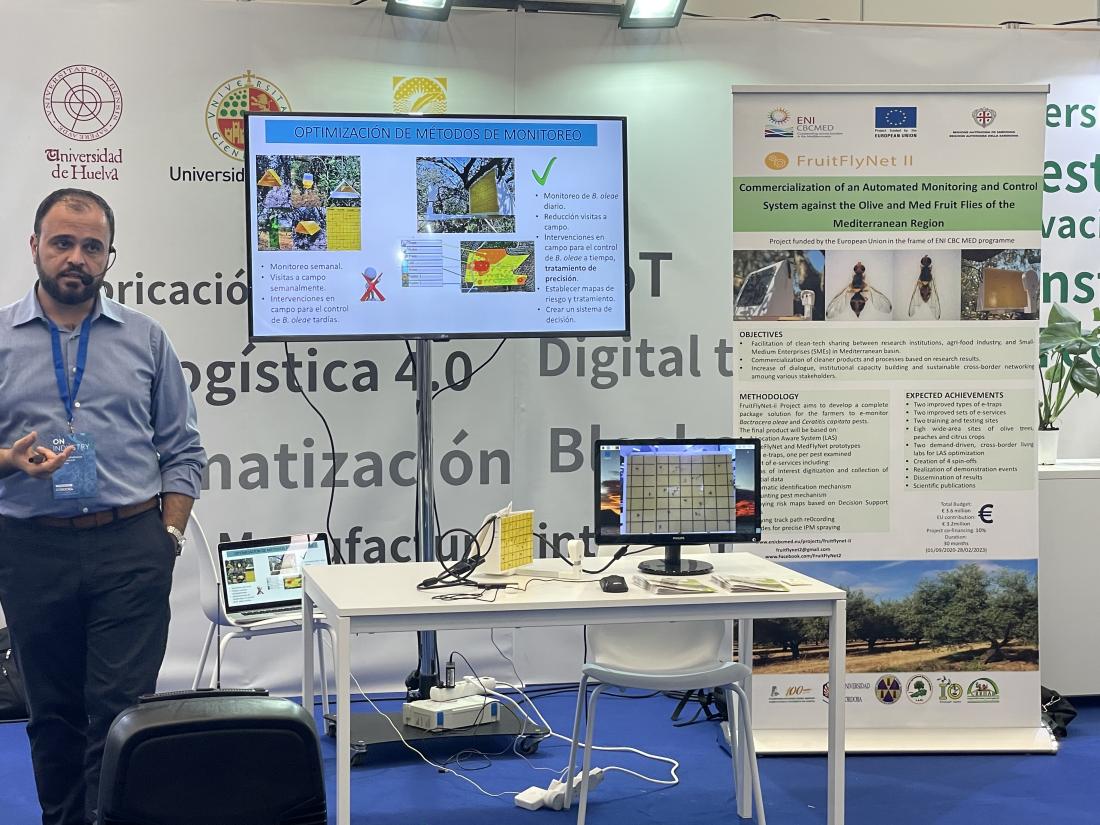FruitFlyNet-ii in Spain presented its olive fly e-traps prototype and associated e-services

Already walking on the final stage of the project and after completing several steps toward the assembling and installing of FuritFlyNet-ii system at a wide area experimental field, the technical team of University of Cordoba from ETSIAM (Escuela Técnica Superior de Ingeniería Agronómica y de Montes), project partner in Spain, organized the first demonstration and dissemination event for its components (e-traps and e-services) to the agrofood domestic industry.
In collaboration with the local authority of the region of Andalusia (Junta de Andalucía), the project demonstration took place during the 3rd Professional Meeting of Collaborative Industry 4.0 held in Córdoba on12-13th April 2023. Professor Meelad Yousef Yousef, local coordinator of the project, together with the technical managers, Emilio Calvo Cerezo and Flora Moreno Alcaide, performed the demonstration event targeting farmers, cooperatives, institutions, members of the Integrated Pest Management (IPM) industry, and various stakeholders.

Firstly, Prof. Yousef gave a speech covering important aspects of the olive fruit fly Bactrocera oleae (Rossi) as the main insect pest of olive crops worldwide, with direct damage to olive oil quality and olives production. Also, his presentation included the state of the art on olive fruit fly control and monitoring, focusing on the advantages and disadvantages of each method (conventional traps, chemistry products, entomopathogenic fungi, etc.) and the future perspectives on IPM legislation. To resolve the disadvantages of the actual monitoring system, digital technologies can help to improve this method by increasing the temporal resolution of the data with lower field visits and the elaboration of risk maps integrated into a Decision Support System (DSS) which will provide a real-time monitoring data and precise risk maps for decision making.

Also, the technical team distributed flyers to the public containing information about the project. Then, Prof. Yousef enumerated the objectives of FruitFlyNet-ii project, its methodology, and its two main component: the olive fly e-traps prototype and the set of e-services associated to them. Detailed information also given about the e-services that allow the identification of the pest, the digitalization of wide areas, the creation of risk maps for a DSS, and a route for optimized spraying.
Consequently, the team members received questions and inquiries from the participants, followed by an interesting discussion and exchange of experiences, opinions, and perspectives about project components.
The attendees gave positive feedback and expressed a strong interest in Fruitflynet-ii's work and its next steps.
Finally, the technical team of the project received all the suggestions for improving the work of the project components in the future and innovative ideas regarding the commercial models of the project outputs.









